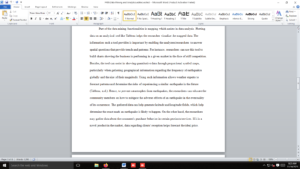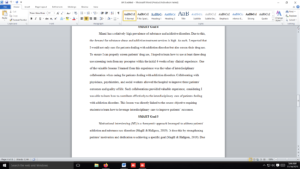Data Mining and Analytics
Please answer the following questions. Please note that grading criteria are included within the Word Document. Please carefully read the directions. When completed, save your Word Document, and upload it to the assignment folder.
- When we ask questions like, “How much data is too much data-to-data mine?” we seek specific knowledge. For this project, you need to identify a specific information system you use for data mining and explain an issue the information system might have with data mining big data.
- When looking at an analytics tool such as Tableau, especially the mapping capabilities, how important is the information it produces? Explain how the mapping capabilities can be used to forecast, for example, sales in an area, new company location, or new product sales.
- What are analytics, and what are the different types of analytics?
Submission Requirements
- Format: Microsoft Word (no PDFs)
- Font: Arial or Times Roman, 12-Point, Double-Space
- Citation Style: APA 7th Edition (Cover page, in-text citations, indented paragraphs, Reference page with hanging indent)
- Length: 3-5 pages (not counting the cover page or Reference page)
- Reference Sources: at least 3 or more (no Wikipedia, Investopedia, TechCrunch)
Requirements: in-depth example
Answer previewData analysis is crucial considering the prevalence of big data in the tech and innovation era. According to Husamaldin and Saeed (2019), data analytics explores and analyzes big data to predict and optimize the right decision for an identified problem. The prevalence of different data types informs the need to understand the businesses’ needs, dynamics, and complexities to determine how to analyze and gather solid findings. For instance, descriptive analytics is a popular approach that answers the “what” question through real-time and historical data. The second is prescriptive data which analyzes the historical patterns of a business, informing future predictions. Prescriptive analytics helps determine the best results while identifying data uncertainties for effective decision-making (Husamaldin & Saeed, 2019). Through this system,[1098 Words]

Data Mining and Analytics


